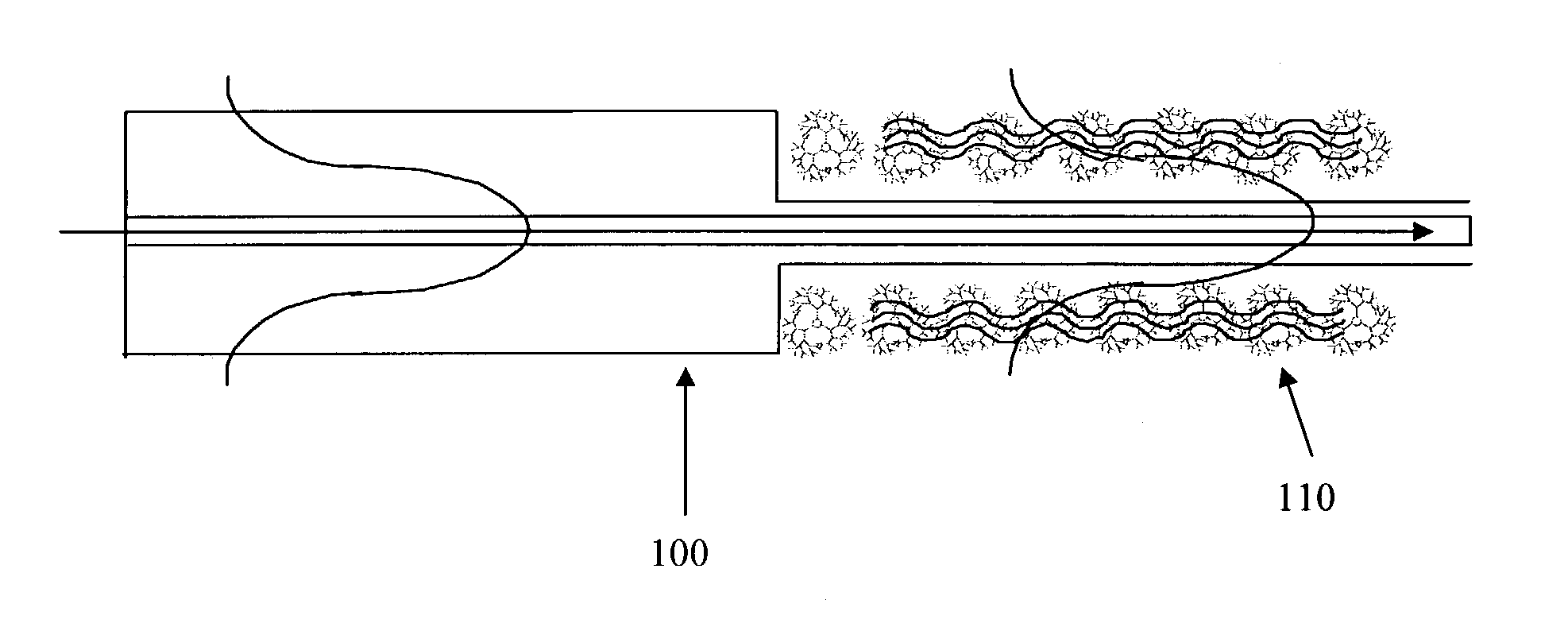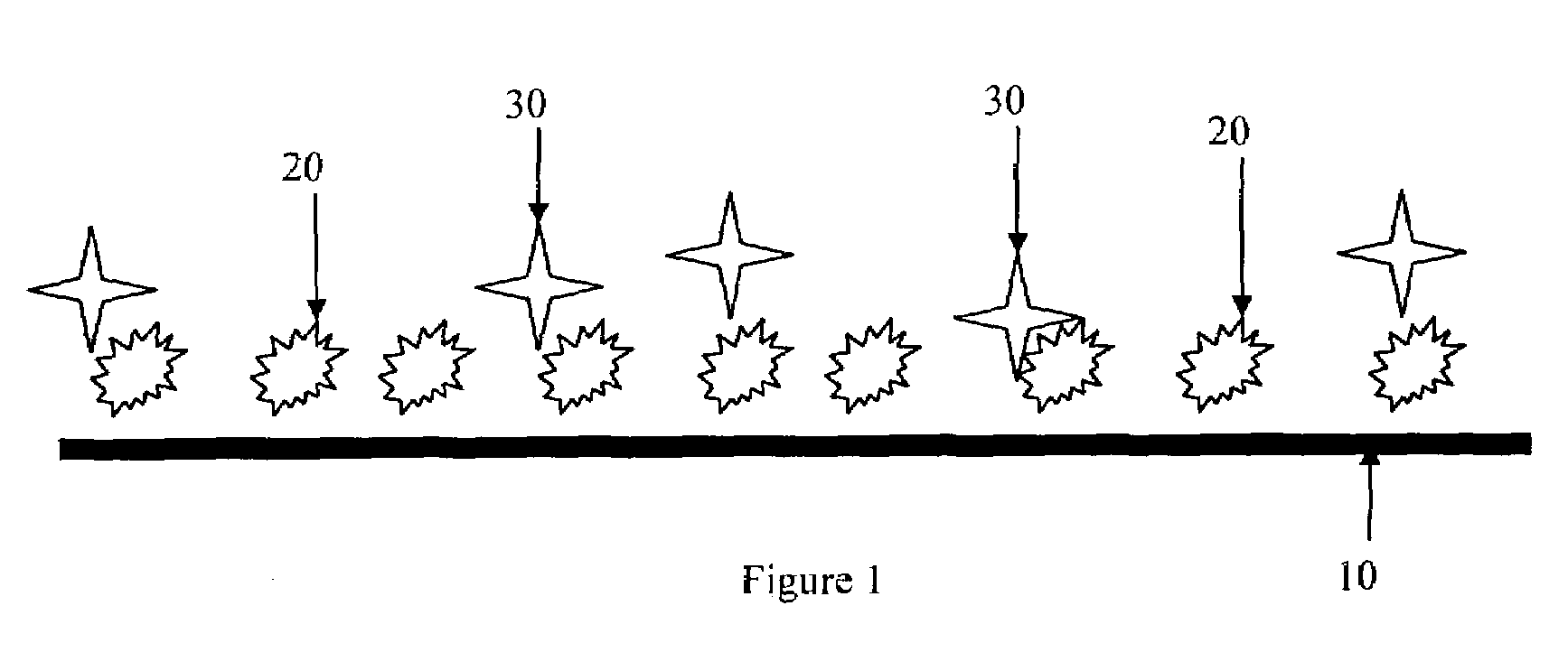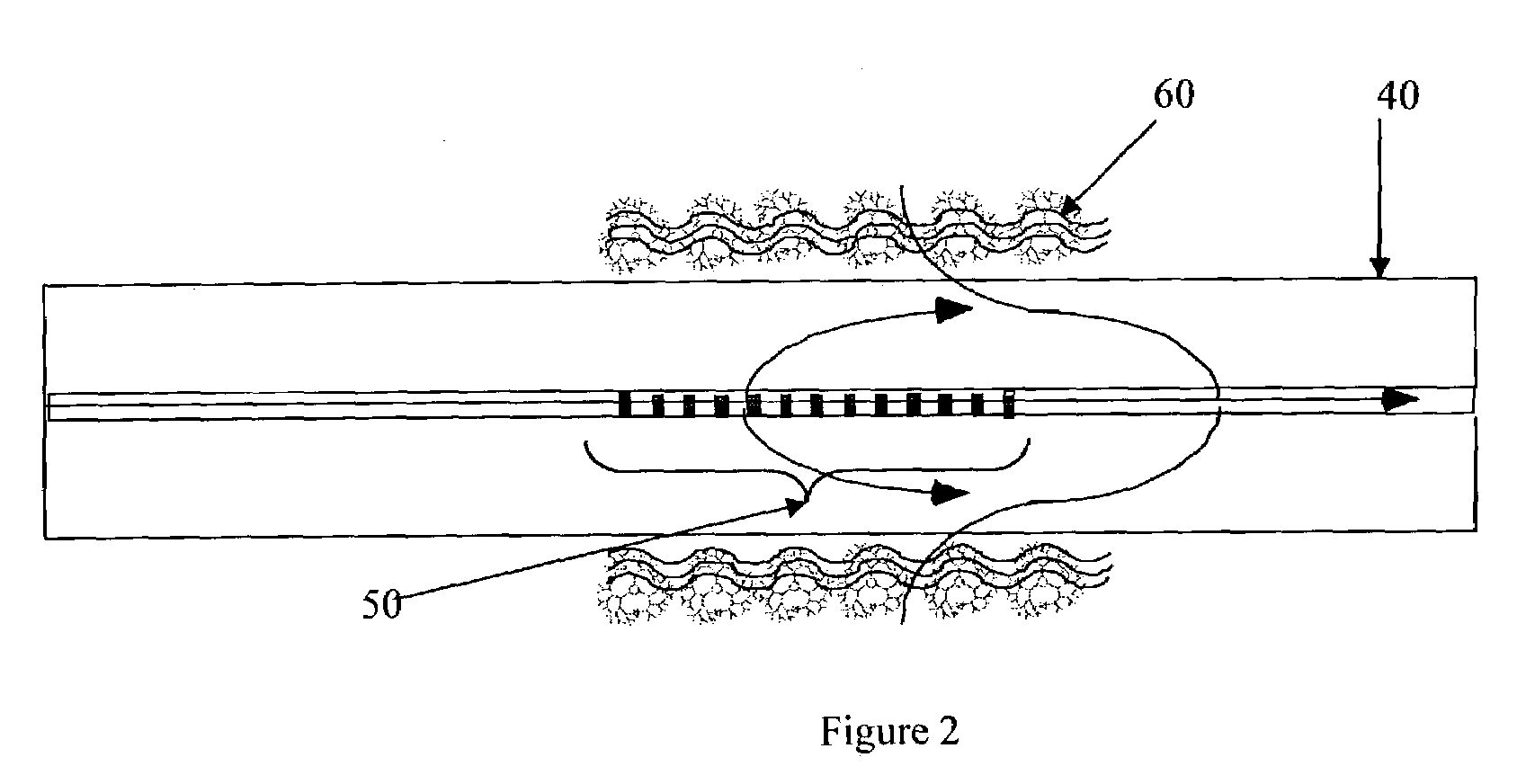Biosensors having enhanced environmental sensitivity
a biosensor and environmental sensitivity technology, applied in the field of biosensors, can solve the problems of deficiency of coatings described by murphy et al. for applications requiring high sensitivity within a specific refractive range, and achieve the effect of increasing binding capacity and enhancing sensitivity
- Summary
- Abstract
- Description
- Claims
- Application Information
AI Technical Summary
Benefits of technology
Problems solved by technology
Method used
Image
Examples
example 1
[0029]A Protein A coated sensor was prepared by providing a glass fiber having a long period grating disposed therein. The glass fiber was cleaned with a solution of methanol and hydrochloric acid in a 1:1 mixture for 1 hour at room temperature. The fiber was rinsed with methanol. The fiber was soaked in a 10% solution of 3-aminopropyl-trimethoxysilane in methanol for 1 hour at room temperature. The fiber was then rinsed with methanol. Next, the fiber was soaked in a solution of 1 mM Polyamidoamine dendrimer (G −0.5) (available from Aldrich Chemical Company) and 19 mg / ml of 1-ethyl-3-(3-dimethylaminopropyl)carbodiimide (EDAC) and 20 mM Morpholineethanesulfonic acid (MES) (available from Sigma) at a pH of 6.8 for 1 hour at room temperature. The fiber was rinsed with a 20 mM MES pH 6.8 buffer solution. Next the fiber was soaked in a 20 mM MES pH 6.8 buffer solution containing 19 mg / ml of 1-ethyl-3-(3-dimethylaminopropyl)carbodiimide (EDAC) and 7.5 mg / ml N-hydroxysuccinimide for 1 hour...
example 2
[0030]The Protein A coated sensor of example 1 was used to monitor the response of the sensor to rabbit IgG. The Protein A coated sensor was exposed to a phosphate buffered saline pH 7.2 (PBS) to establish a baseline signal for the sensor. (See FIG. 6) The sensor was then exposed to a 1 μg / mL solution of rabbit immunoglobulin (IgG, Technical grade available from Sigma) in PBS pH 7.2. As shown in FIG. 6, the rabbit IgG had bound to the protein A on the surface of the fiber sensor. To remove any unbound material from the sensor surface, the fiber was exposed to PBS pH 7.2 buffer. Next, the fiber was exposed to 10 mM Hcl to remove the bound IgG material from the protein A and to regenerate the fiber for a subsequent assay cycle. Lastly, the fiber was exposed to a PBS pH 7.2 buffer solution to re-establish a baseline and return the sensor to a buffered environment.
PUM
 Login to View More
Login to View More Abstract
Description
Claims
Application Information
 Login to View More
Login to View More - R&D
- Intellectual Property
- Life Sciences
- Materials
- Tech Scout
- Unparalleled Data Quality
- Higher Quality Content
- 60% Fewer Hallucinations
Browse by: Latest US Patents, China's latest patents, Technical Efficacy Thesaurus, Application Domain, Technology Topic, Popular Technical Reports.
© 2025 PatSnap. All rights reserved.Legal|Privacy policy|Modern Slavery Act Transparency Statement|Sitemap|About US| Contact US: help@patsnap.com



